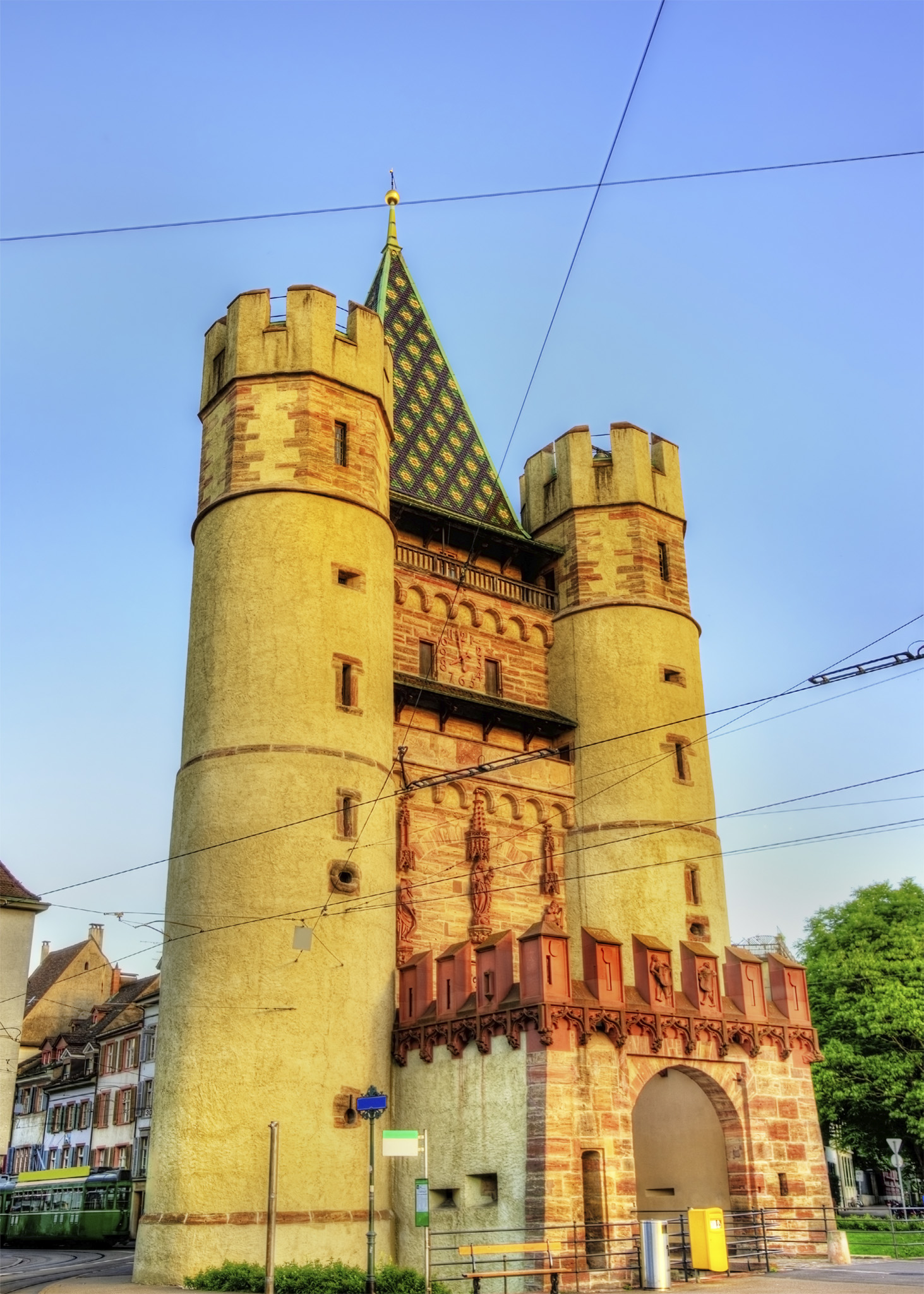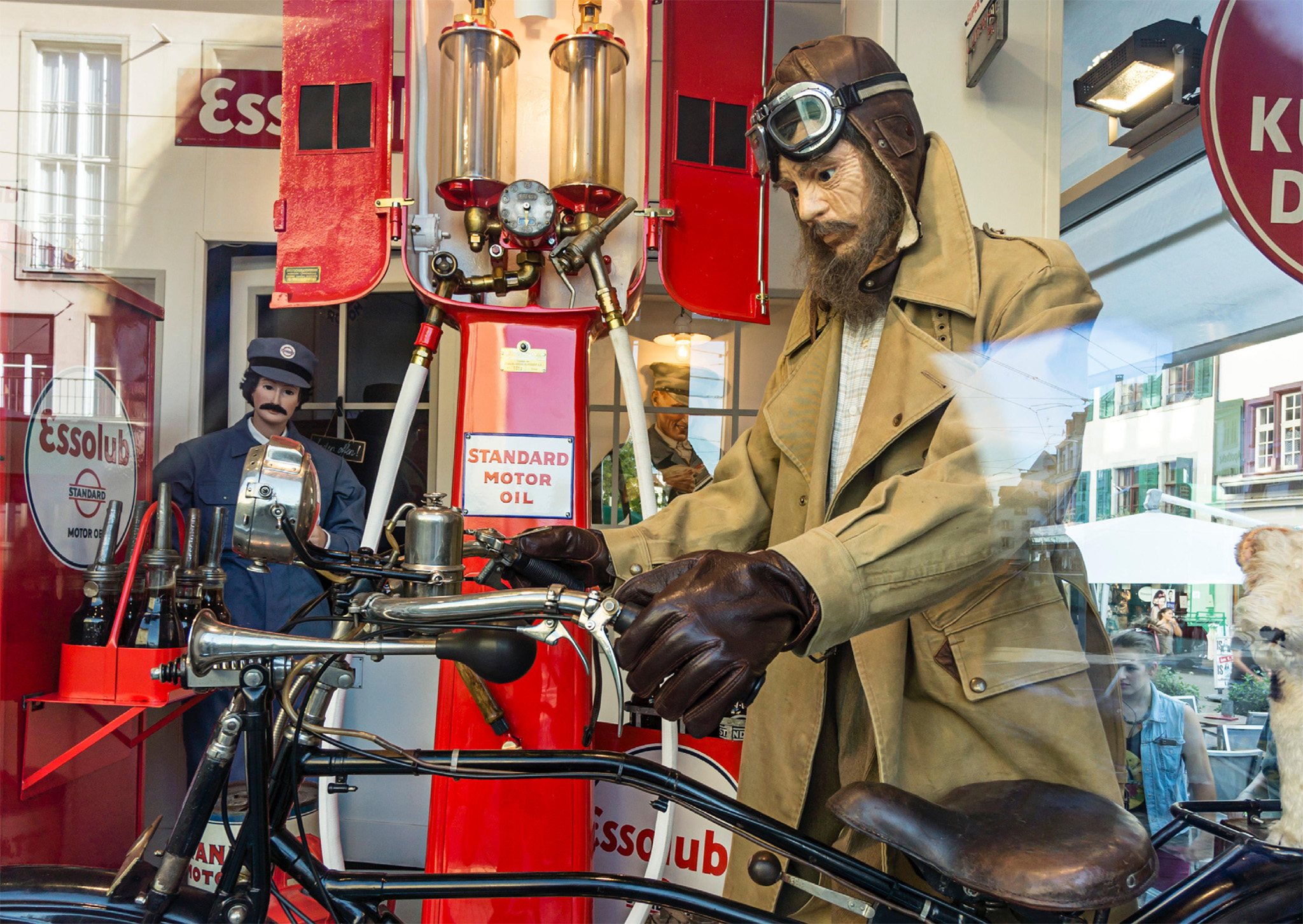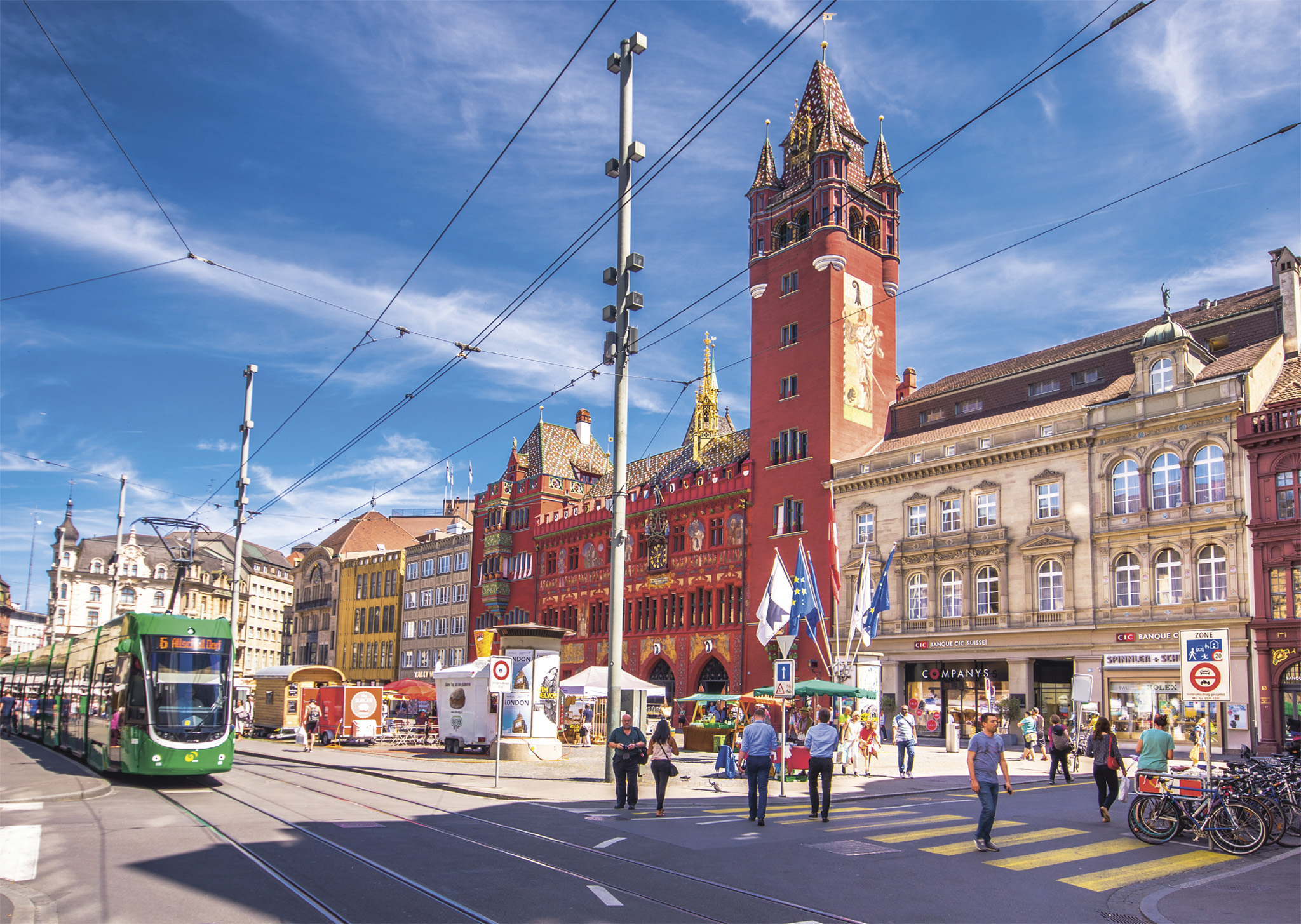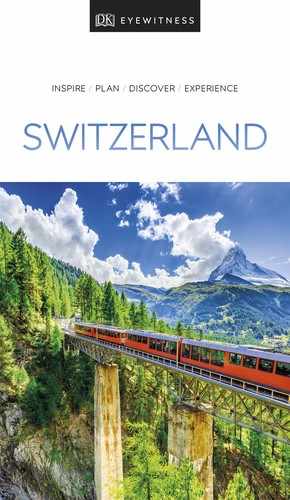Mention the city of Basel and most people today will think of industry or art. Straddling the Rhine, this city of contrasts is the country’s only port and as such is a major centre of industry, with a long history of pharmaceutical expertise. The city is also one of Switzerland’s most cultured cities, hosting Art Basel, the world’s largest contemporary art fair. It is also famous for its festivals, the largest of which, Fasnacht, is an exuberant masked carnival.

t Basel's riverside Old Town under the towering presence of the cathedral
Experience Northern Switzerland

n Double-tap image to read the labels
Through a variety of artifacts dating back to the 13th century, including liturgical objects, the museum illustrates Jewish religion and customs, and the history and daily life of this community. It is the only Jewish museum in Switzerland. The Jewish population in Basel is the second largest in Switzerland after Geneva. The first Zionist Congress took place in Basel, in 1897.
Founded in 1460, Basel's university is the oldest in the country. Among the illustrious figures with whom it is associated are the humanist Erasmus of Rotterdam (1466–1536), the mathematician Jakob Bernoulli (1654–1705) and the philosopher Friedrich Nietzsche (1844–1900). The present university building is the Kollegienhaus, a great Modernist edifice on the east side of Petersplatz, completed in 1946. The entrance to the building is embellished with mosaics depicting the university’s founders, and the main hall has stained-glass windows.
This monumental Gothic gate stands at the entrance to Spalenvorstadt, a narrow alley lined with picturesque shuttered houses, on the west side of the Old Town (Altstadt). Built in 1370, the Spalentor formed part of the defensive walls that once encircled Basel. The tower consists of a pair of crenellated turrets framing a square central section, which has a pointed roof laid with glazed red, black and white tiles. The gate, which has wooden doors and a portcullis, is embellished with sculptures and on its west side it bears the arms of the city.

t The Gothic crenallated turrets framing the old city gates, the Spalentor

t A mannequin and a bicycle on display in the Spielzeug Welten Museum Basel
With more than 6,000 items laid out on four floors, the Toy Worlds Museum in Basel is the largest of its kind in Europe. Most of the exhibits date from the late 19th to the early 20th centuries, although there are also some contemporary pieces displayed as well. All the doll’s houses and miniature shops on display are meticulously decorated and furnished. The collection also includes mechanical models, teddy bears and a variety of other stuffed animals made by leading toymakers of today and yesterday.
Even if you don’t have time to go in, the museum is always worth a visit – the spectacular window displays are an event in themselves.
Appropriately for one of the world’s centres of the pharmaceuticals industry, Basel has a museum devoted to the history of medicinal chemistry. Among its collection are instruments and medicines used by apothecaries through the ages, and it is located in the house where Erasmus and Paracelsus once lived. There are also reconstructions of a pharmacy and a laboratory.
Basel’s comprehensive museum of antiquities covers over 5,000 years of history, and is devoted to the four great early civilizations of the Mediterranean basin – ancient Greece, Etruria, Rome and Egypt. The Greek pieces include a fine collection of vases from the Archaic to the Classical periods, marble sculpture, bronze figurines, pottery, coins and jewellery. The collections of Etruscan pottery and Roman and Egyptian art are equally impressive. A programme of well-curated special exhibitions is regularly updated.

t Basel's bustling Marktplatz, with stalls setting up for market day
Every weekday morning, Marktplatz is filled with the stalls of a produce market, and on public holidays it becomes the hub of Basel’s seasonal festivals. The square is lined with fine buildings dating from the late 19th to the early 20th centuries.
Just to the northeast of the Marktplatz is Mittlere Rheinbrücke. Near the bridge is a curious, bearded figure, the Lällekönig (Tongue King), which has become the symbol of Basel. It is a static replica of an amusing 19th-century mechanical figure that rolled its eyes and stuck out its tongue at passersby. The original figure is in the Historisches Museum.
The church of St Leonard overlooks the city from its hilltop location. It stands on the site of an 11th-century church, whose Romanesque crypt survives. After the 1356 earthquake that destroyed much of Basel, the church was rebuilt in the Gothic style. The interior features 15th- and 16th-century Gothic paintings and an exquisite rood screen from 1455.
The headquarters of three separate history museums, this collection occupies the Barfüsserkirche, a former Franciscan church. The Historisches Museum traces Basel’s history from its beginnings as a Celtic settlement. Exhibits include pottery, silver- mounted vessels, wooden chests and Gothic, Renaissance and Baroque liturgical vessels, as well as other items from the cathedral treasury. There are also tapestries, altarpieces and weapons on display.
Thanks to the Kunsthalle, Basel is a well-established forerunner in the world of modern art. One of the city’s most prominent cultural institutions, the Kunsthalle hosts a rolling programme of exhibitions of work by leading contemporary artists. The Kunsthalle is located opposite the Theater Basel, another institution in the city’s cultural hub. Between the two buildings stands a fountain that incorporates several of Jean Tinguely’s kinetic sculptures with moving elements, created in a style known as metamechanics.
Experience Northern Switzerland
Basel Fasnacht

Starting in early morning darkness, Basel gets turned upside down for die drey scheenschte Dääg (“the three most beautiful days”) of the year. During Switzerland’s biggest carnival, a sea of illuminated lanterns and thousands of costumed music-makers and masked Fasnächtler (participants) pour through the city streets for parties, parades and music.
The Kunsthalle also houses Switzerland’s museum of architecture. This museum seeks to expand people’s perceptions of architecture and urban development, concentrating primarily on the architecture of the early 20th century onwards, with an array of well-considered displays in Neo-Baroque rooms. The Architecture Museum also hosts temporary exhibitions, usually four per year, which showcase the work of Swiss architects, and of international architecture, as well as related subjects such as architectural photography, the effect of acoustics on the design of a building and the links between art and architecture. There is also a programme of public workshops and lectures.
This Rococo mansion, built in 1775–80, was the residence of J R Burckhardt, the owner of a silk mill. Furnished in period style, it now houses an absorbing museum that illustrates patrician life in the 18th and 19th centuries. On the first and second floors there are elegantly furnished drawing rooms, a dining room, a music salon and a kitchen. The top floor contains a display of rocking horses and other toys. The ground floor and basement are filled with a superb collection of ceramics, including Italian faïence, clocks and fine porcelain made at major European factories.
Experience Northern Switzerland

t Ornately decorated 18thcentury clock in the Haus zum Kirschgarten
Augustinergasse is a pretty little alley that runs north from Münsterplatz, along the escarpment on the south side of the Rhine. As well as a Renaissance fountain with a figure of a basilisk, the street contains several fine 14th- and 15th-century houses.
The handsome Neo-Classical building at No 2 houses the Naturhistorisches Museum, which contains an extensive collection of minerals, and has sections devoted to zoology and palaeontology. Around the corner is the Museum der Kulturen, set in a building crowned with a shimmering fishscale roof that was designed by Basel architects Herzog & de Meuron. This anthropology museum examines cultures from around the world. Among the finest pieces are wooden reliefs from Tikal, the ancient Mayan site in Guatemala.

t A visitor looking at a Papua New Guinean mask of initiation at the Museum der Kulturen
Naturhistorisches Museum
" ' - ⌂ Augustinergasse 2 # 10am–5pm Tue–Sun ∑ nmbs.ch
Museum der Kulturen
" ' - ⌂ Münsterplatz 20 # 10am–5pm Tue–Sun ∑ mkb.ch

t The brightly painted façade of Basel's eyecatching Rathaus
The main feature of Basel’s Marktplatz is the eye-catching Rathaus, the Gothic town hall with a bright red façade decorated with allegorical figures. The central arcaded section of the building dates from 1504–21, while the tower and annexe date from the 19th century. The inner courtyard is painted with frescoes from the 16th century, though they are heavily restored. Tours in many languages, including English, can be arranged through the tourist office.
The district of St Alban takes its name from the church of a former Benedictine monastery founded in the 11th century. The canal that runs through this attractive district was used to power the monastery’s mills. One of these, the Basler Papiermühle, now houses a museum of paper, writing and printing. Visitors can watch paper being made by hand. The Museum für Gegenwartskunst (Museum of Contemporary Art), a short distance from the mill, showcases contemporary art.
Basler Papiermühle
" ' - ⌂ St Alban-Tal 37 # 11am–5pm Tue–Fri & Sun, 1–5pm Sat ∑ papiermuseum.ch
Museum für Gegenwartskunst
" ' - ⌂ St Alban-Rheinweg 60 # 11am– 5pm Tue–Sun ∑ kunstmuseumbasel.ch
The first permanent bridge over the Rhine at Basel was built here in 1226. A small fortress was subsequently established on the north bank, and the settlement that grew up around it became part of the city in the late 14th century. For centuries, Kleinbasel – which translates as “Lesser Basel” – was inhabited mainly by the poorer sector of the city’s population. In recent years, however, the area has been gentrified and it now buzzes with trendy galleries, cafés and restaurants.

Insider Tip
Museum Pass
Valid for a full year, the Museum Pass is a good option if you plan to visit a few of Basel’s 37 museums. The pass also gets you into castles, museums, gardens and parks across Germany, France and Switzerland.

t A visitor interacting with one of Jean Tinguely's kinetic sculptures
This pale pink sandstone building, designed by the Swiss architect Mario Botta, stands in Solitude Park, on the banks of the Rhine. The museum is devoted to the work of Jean Tinguely, famous for his kinetic sculptures and interactive drawing machines.
Born in Fribourg in 1925, he was educated in Basel. He later settled in New York in 1960, but in 1968 he returned to his native country, where he lived until his death in 1991. The nucleus of the collection consists of works by Tinguely, donated by his wife, the artist Niki de Saint-Phalle. These pieces, along with many later gifts, bequests and purchases, allow visitors to trace Tinguely’s artistic development.
While various engine-driven contraptions that visitors can set in motion occupy the mezzanine, the upper floor is home to various items associated with Tinguely. The central exhibit on the ground floor is a huge sculpture, Tinguely’s Grosse Méta Maxi-Maxi Utopia (1987). The museum also stages exhibitions concentrating on aspects of Tinguely’s work, including its Dadaist roots.
Did You Know?
Jean Tinguely created his first piece of kinetic art when he was 12 years old.
